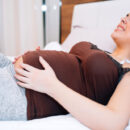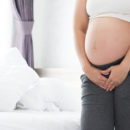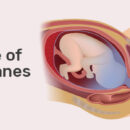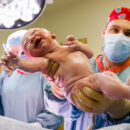
It’s the baby or the dog – start planning now for a safe and peaceful household
Pets and babies! Many people experience heart palpitations at the mere mention of one of these let alone the thought of having both in the home at the same time.
But fear not, because with consideration and planning they can coexist happily and safely, and enhance each other’s lives as well as the wider family.
Pets are great for children in so many ways: they promote responsibility, provide companionship, engender empathy, encourage exercise and more. But there are other advantages to having a pet that you may not be aware of.
For example, one Swedish study published in JAMA Pediatrics in 2015 showed that children who had a dog in their first 12 months of life were 13% less likely to develop asthma than those brought up without a dog.
But the Swedish study is not alone in demonstrating the health benefits of pets. One Finnish study published in Pediatrics in 2012 found that children growing up in households with dogs or cats had fewer colds and ear infections than those growing up in pet-free households. However, there may be little benefit if your pet doesn’t go outside; it is thought that bacteria and pollens brought in by the pets help stimulate a child’s immune system.
Prepare early
Many people speak of their dog or their cat as being “their baby” and without wishing to anthropomorphise, it’s likely that if you feel this way, your pet will be only too happy to agree.
As such, pets, like children, are adept at “sniffing the air” for change and will probably be aware that something is brewing even if they are unable to identify exactly what it is. It is entirely likely that your pet will get a little twitchy as new furniture, freshly painted walls and incoming bags of baby clothes begin to make their presence felt.
Don’t be surprised if your cat suddenly regresses to kittenhood a little by going to the toilet in the house or hiding in unexpected places. This is a completely normal feline reaction to disruption of the established routine and environment. Be prepared to mollycoddle your cat a little by providing litter trays, patience and plenty of petting.
Dogs, too, have metaphoric antennae that are finely tuned to change. Give your dog plenty of reassurance, don’t expect too much and help it become accustomed to the greater changes to come by doing things such as playing it the sounds of a baby, including crying, giggling, and the cooing tones of adults.
New routines
It is important that you accept the reality that you will be spending less time with your pet once the baby has arrived, but avoid the temptation to overcompensate by spending more time with your pet in the lead up to the birth. This is likely only to make things harder once the baby is born. Instead spend less time with your pet, but try to make each contact session really significant in preparation for the impending post-arrival dynamic.
It may sound silly, but carrying a life-sized newborn doll around with you in the presence of your pet can help prepare them, and, hopefully, this could prevent any sudden onset of jealousy once the real deal arrives. Also, if you have friends with babies, it can be a good idea to bring them into your home so that you can expose your cat or dog to scents and sounds of real human infants.
Similarly, help make things easier by keeping your dog or cat away from the rooms, areas and creature comforts that it will not be allowed into/on once the baby has arrived – again this will hopefully help ensure less animal resentment to your new arrival. For example, don’t let Fido or Felix sleep in the shiny new cot!
Both cats and dogs will need to have their toys stored in a separate place away from the baby’s possessions, while animal eating areas should be somewhere calm and separate from the busier parts of the home. Safety gates can be a good way of ensuring peace of mind – although these are not so effective for cats or indeed the nimblest of dogs.
Don’t expect too much of your pet
It is important to remember that however good natured your cat or dog is, it is not a rational being and is unlikely to recognise a newborn as another human. As such, don’t leave your dog or cat alone with the baby, no matter how attentive it appears to be, as you simply never know what might happen or what might trigger sudden volatility in your pet.
Getting obedience training for your dog before the birth can help you both establish clear discipline and boundaries, but even this is no guarantee against the possibility of an accident.
When the baby is born
It is a good idea to get your cat or dog accustomed to your baby’s scent before bringing him or her home. Try offering your pet a blanket or item of clothing for your dog or cat to investigate with its nose – this can help foster calmness and familiarity ahead of the first real meeting.
Remember, it is normal that your pet will show some sign of distress or disturbance at the arrival of a newborn, it is how you deal with this that can be crucial in setting the tone for the future relationship.
Don’t introduce new rules or strict discipline as this is only going to be counterproductive, and try to stay calm even when you are experiencing anxiety about how the settling-in period is developing. Both pets and babies respond best to an attitude that is calm and confident.
And remember, no matter how well it is going in the early weeks, always supervise your pet when it is with the baby and never leave the two alone.
The good news
Having a pet in the same house as a newborn may seem like a big ask, but if you are a committed pet owner, there is no reason why your child and your pet should not live happily and healthily alongside each other. With some care and attention during the pregnancy and early years, pets and babies can have real benefits for each other.
And perhaps the biggest advantage of a pet is that it can help bring the family together…and what can be healthier than that?
Important – If you or your child are unwell you should seek medical advice from a professional – contact your GP or visit an A&E department in an emergency. While My BabyManual strives to provide dependable and trusted information on pregnancy and childcare 24/7 via our website pages, we cannot provide individual answers to specific healthcare questions.










